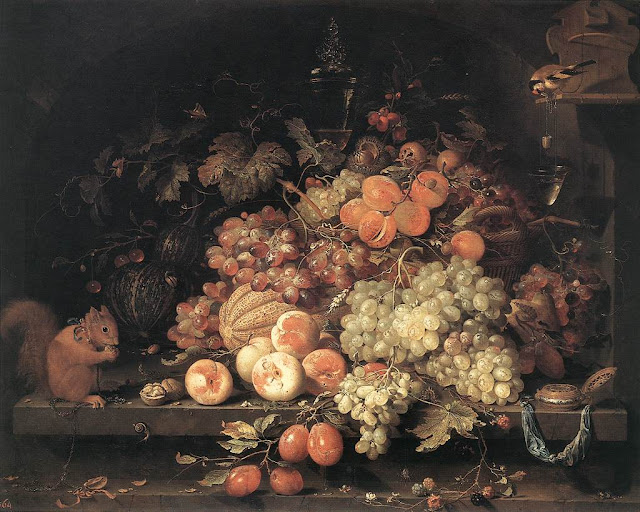 The Art of Faith: A Guide to Understanding Christian Images by Judith Couchman
The Art of Faith: A Guide to Understanding Christian Images by Judith Couchman
My rating: 4 of 5 stars
Judith Couchman wished she understood Christian images in art. She wound up with an art history degree, teaching classes at a local college. Later, wishing there was a simple, concise reference that could be carried into a museum, Couchman wrote The Art of Faith. We’re lucky she is such a “can-do” person because this book is a real treasure for anyone who ever looked at the painting of Jesus or a saint and said, “Why is all that other stuff in there?”
Couchman uses a few introductory chapters acquainting readers with what constitutes Christian art, when it first began appearing consistently, and the types of art that appears in different eras, and how it was accepted or rejected over the ages. The rest of the book is divided by topic into chapters that has brief descriptions of Christian symbolism, names a painting with an example, and then deciphers a bit of it for us. The subjects seem all-inclusive and widely varied from the expected (stories about Jesus, the cross) to things we might not consider otherwise (plants, animals, shapes, letters). Many of the entries have illustrations so that when you encounter something unfamiliar, such as a “sakkos” for example, you know what you’re looking at.
This excerpt gives an example of the unexpected that can be encountered in a painting which seems fairly straight forward.
WALNUT Saint Augustine compared the walnut to Christ’s redemptive work. He likened the shell to the wood of the cross; the bitter substance surrounding the nut to Christ’s flesh; and the meat to sweet, divine revelation. In the Jewish tradition, the walnut symbolized Scripture. EXAMPLE: Fruit Still-Life with Squirrel and Goldfinch, painting by Abraham Mignon, seventeenth century. State Museum, Kassel, Germany. For this busy still life, Mignon imagined a squirrel releasing itself from a chain, wearing a bell collar, and munching on a walnut. In the Middle Ages a squirrel signified evil and this particular collar represented a fool or a sinner. Consequently, the former sinner chose Christ’s life-giving nature.
I had no idea. This prompted me to look for the actual painting which was one in which I’d have missed all the significance if not curious enough to read in this book about what a walnut could possibly represent. Honestly, it was one I’d never have given a second glance because a still life of fruit isn’t my thing, even with a cute squirrel.
Additionally, at Web Gallery of Art, there was more information about the goldfinch in the painting.
…The two rather cute little animals, a squirrel and a goldfinch, are also in opposition to each other. … Unlike the squirrel, the goldfinch is a christological symbol, particularly with reference to the Passion. Its positive meaning can be gathered from its position in the upper portion of the painting (top=sphere of salvation). The actions of the bird are worth nothing. Chained to an arched semicircle, from which it can peck food out of a small container, it is pulling up a thimble-sized receptacle from the left-hand edge of the shelf. It is filled with water or – more likely – wine (as a Eucharistic symbol of the blood of Christ), which has been scooped out of a conical glass without stem or base.
Amazing. I look at the painting and now see so much more to ponder, which is always the case when our eyes have been opened to the layers of meaning placed right in front of us. The Art of Faith does contain a goldfinch entry but references a different painting. It would have been nice to see a brief mention of the goldfinch in the Walnut entry, however, I know that would have taken a much larger book. As it was, I went searching for more goldfinches in a quest that was much more fulfilling than many a wandering path I’ve taken through the internet. All prompted by this book.
 |
| Abraham Mignon, Fruit Still-Life with Squirrel and Goldfinch via Web Gallery of Art |
It is hard to express just how excited I was after I opened the Paraclete Press envelope and found this book inside. For one thing, it is right down my alley since I post a bit of art on my blog every day and there’s nothing I love more than getting a little faith in my art. For another, I am working on a personal project right now where symbolism, art, and faith are paramount. It is as if providence placed this resource in my hands. Now that I’ve had a chance to read some of it, especially with the internet available to show me the paintings, I am even more thrilled.
The one thing missing is a “how to read a painting” section. It would have been great to have a few different sorts of paintings with call outs showing the different visual symbolic devices and how they interact with each other, opening the artist’s meaning even further. This would have been valuable in helping novices learn to look for more than just one symbol, as in the above description where our attention is drawn to the positioning of the squirrel and goldfinch, with meaning given. However, this is a small thing which doesn’t interfere with the book’s usefulness overall.
There are also several excellent cross-reference indexes, a list of internet resources for viewing art, a glossary of art terms, and much more. Altogether this is a really fine reference book which will be useful to anyone interested in looking beneath the surface to find what the artist was really trying to tell us.











